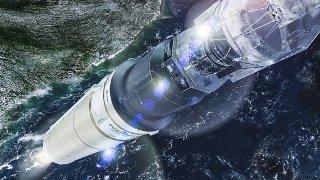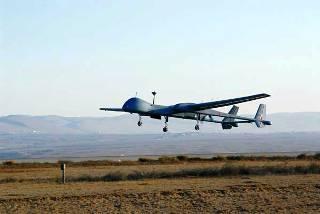
Planck spacecraft. An ESA photo.
LONDON (PTI): Scientists believe they have found the first evidence that other universes exist after analysing the data gathered by the European Space Agency's Planck spacecraft.
Theories that our universe could be just one of billions -- perhaps an infinite number - have been discussed for decades but until now they have lacked any evidence.
However, a few weeks ago, scientists published a new map of the cosmic microwave background - the 'radiation' left behind after the Big Bang that created the universe 13.8 billion years ago.
The map, based on Planck data, showed anomalies in the background radiation that, some experts say, could only have been caused by the gravitational pull of other universes outside our own, The Sunday Times reported.
"These anomalies were caused by other universes pulling on our universe as it formed during the Big Bang," said Laura Mersini-Houghton, a theoretical physicist at the University of North Carolina at Chapel Hill.
"They are the first hard evidence for the existence of other universes that we have seen," she said.
Mersini-Houghton, and her colleague Professor Richard Holman, at Carnegie Mellon University, published a series of papers from 2005 predicting what Planck would see.
In particular, they predicted that the ancient radiation permeating our universe would show anomalies generated by the pull from other universes.
The scientists analysing the Planck data have now published a paper acknowledging the anomalies exist and cannot be explained by conventional means.
"It may be that the statistical anomalies described in this paper are a hint of more profound physical phenomena that are yet to be revealed," it said.
Planck gathered radiation from when the universe was just 3, 70,000 years old - still glowing from the Big Bang. It has been travelling across space for 13.8 billion years and so is remarkably faint but still detectable.
In theory, that radiation should vary a little on the scale of galaxies and clusters of galaxies, but at much larger scales it should be evenly distributed.
Planck's data showed the radiation is stronger in one half of the sky than the other. There is also a large 'cold' spot where the temperature is below average.
George Efstathiou, professor of astrophysics at Cambridge, who co-authored the papers setting out the Planck findings, said the suggestion that the data offered evidence for other universes was speculative but "very interesting".
"Such ideas may sound wacky now, just like the Big Bang theory did three generations ago. But then we got evidence and now it has changed the whole way we think about the universe," he said.
 Previous Article
Previous Article Next Article
Next Article













The Indian Air Force, in its flight trials evaluation report submitted before the Defence Ministry l..
view articleAn insight into the Medium Multi-Role Combat Aircraft competition...
view articleSky enthusiasts can now spot the International Space Station (ISS) commanded by Indian-American astr..
view article